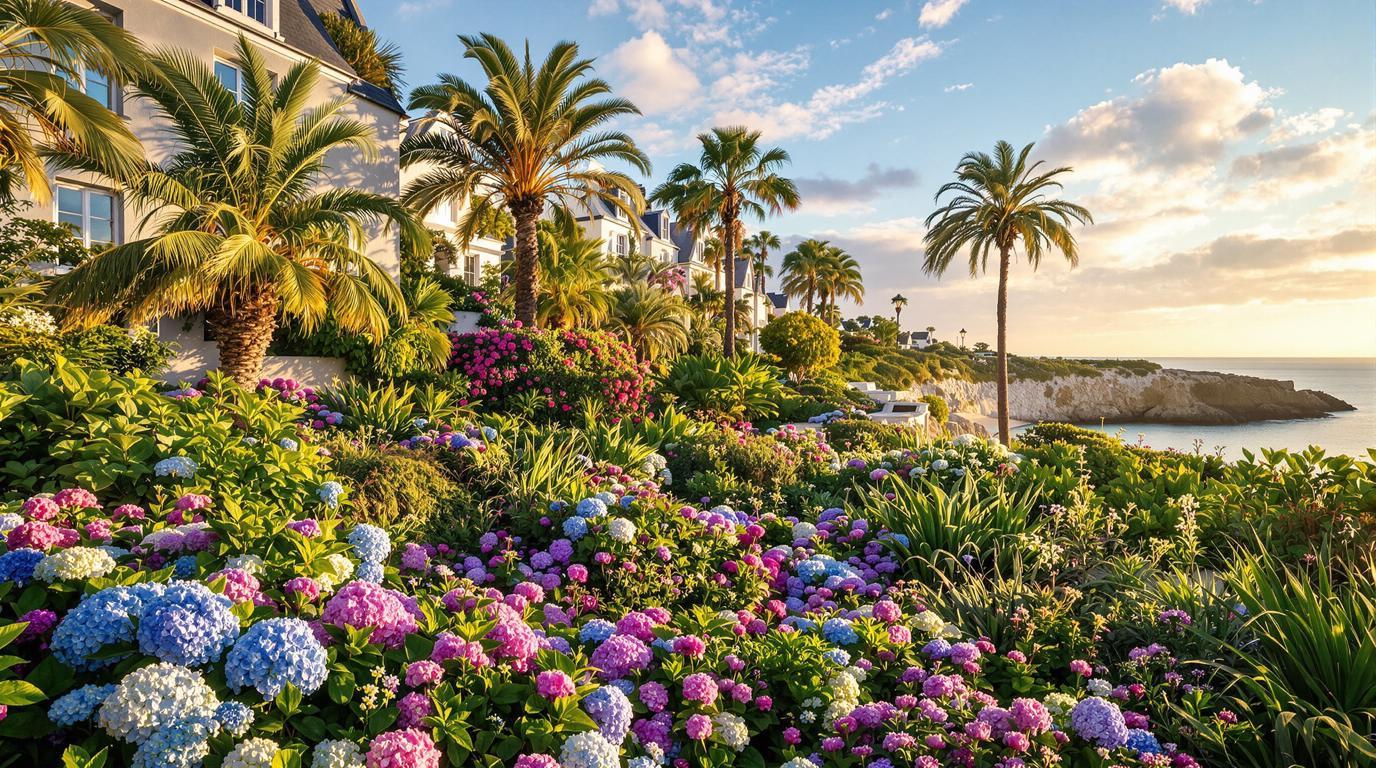I step onto the harbor at Port Clos as the ferry pulls away, leaving behind the rumble of engines and the weight of mainland schedules. The air here carries whispers of wild thyme and salt spray, a sensory welcome to Île de Bréhat – France’s “Flower Island” where cars haven’t disturbed the rhythm of life since 1906. As I shoulder my backpack and begin the gentle climb up the village path, time seems to expand around me, offering the luxury that modern travelers rarely find: the permission to wander without purpose.
Where pink granite shores cradle a Mediterranean miracle
Straddling the Brittany coastline just 10 minutes by ferry from Paimpol, Bréhat exists in a geographical anomaly – a microclimate that shouldn’t be possible this far north. Gulf Stream currents gift this 3.5-square-kilometer sanctuary with temperatures that nurture palm trees, giant agave, and eucalyptus alongside traditional Breton landscapes.
“We are neither fully Breton nor Mediterranean,” explains Marie-Claude, whose family has tended the island’s gardens for three generations. “The island creates its own rules. That’s why we have fuchsia climbing over granite cottages while arctic terns nest along our shores.”
This contradiction extends beyond botany into the island’s dual personality – a cultivated, flower-laden south island connected by a narrow isthmus to the wild, wind-swept northern terrain that could have been plucked from the Celtic imagination.
Following hidden paths to the island’s untold stories
The lighthouse keeper’s secret garden
Most visitors trek to Paon Lighthouse at Bréhat’s northern tip, but few discover the hidden entrance to what locals call “Luc’s Garden.” Behind weather-worn granite walls, a riot of hydrangeas frames a small stone bench where the last lighthouse keeper planted this sanctuary decades ago. Accessible only at low tide via a narrow path east of the lighthouse, this pocket of tranquility offers views across churning waters toward Île Raguenez that you’ll likely have entirely to yourself.
Like other car-free island paradises around the world, Bréhat’s absence of motor vehicles has preserved these intimate spaces that would otherwise be trampled by tourism’s heavier footprint.
The glass-blower’s twilight workshop
While guidebooks mention the Verreries de Bréhat glassworks, they rarely reveal that visitors can witness a mesmerizing spectacle if they time their visit for the last hour before closing. The workshop glows amber as master artisans transform molten glass into delicate sea creatures, their silhouettes dancing against ancient stone walls. Unlike daytime demonstrations, these end-of-day sessions often include experimental pieces that never reach the showroom.
Savoring the flavors of an island between two worlds
At La Table de Bréhat, hidden behind an unassuming blue door near the harbor, I discover the island’s culinary identity doesn’t fit neatly into categories. Chef Antoine serves what he calls “collision cuisine” – dishes where Breton traditions meet Mediterranean influences, mirroring the island’s botanical contradictions.
His signature “granite and mimosa” plate pairs locally harvested mussels with saffron cream and preserved lemons – a dish that wouldn’t exist without Bréhat’s peculiar climate. The restaurant offers just eight tables, so reservations are essential, especially during summer months when the island’s population swells from 400 to nearly 5,000.
For those seeking other authentic French experiences, the island makes an excellent starting point for exploring hidden natural wonders throughout Brittany’s coastline.
Planning your escape to France’s flower-strewn sanctuary
Timing your visit for maximum enchantment
May and September offer the perfect balance between favorable weather and minimal crowds, with temperatures hovering around 18°C (65°F). The island’s famous hydrangeas peak in late June, while the mimosas transform southern slopes into golden cascades in April. July and August bring Mediterranean warmth but also visitor caps that can mean waiting for later ferries.
Navigating without motors
The ferry from Paimpol (€10 round-trip) deposits visitors at Port Clos, where bicycle rental shops offer traditional bikes (€15/day) and electric options (€30/day). The entire island can be circumnavigated on foot in about 3 hours, but those seeking to maximize their exploration should consider staying overnight at one of the island’s handful of small hotels or guesthouses like La Maison du Pêcheur.
Plant enthusiasts should also consider exploring France’s botanical treasures on the mainland after experiencing Bréhat’s unique flora.
Where time moves at the pace of tides, not seconds
As twilight settles over Bréhat, I find myself at Guerzido Beach, where the retreating tide reveals a mosaic of tide pools. An elderly islander, noticing my fascination with a particular formation, approaches to tell me it’s called “the mirror of the sky” by locals. In this moment, I understand Bréhat’s true luxury isn’t in amenities but in preservation – of space, silence, and the increasingly rare chance to feel wonderfully lost just a ferry ride from the mainland.
